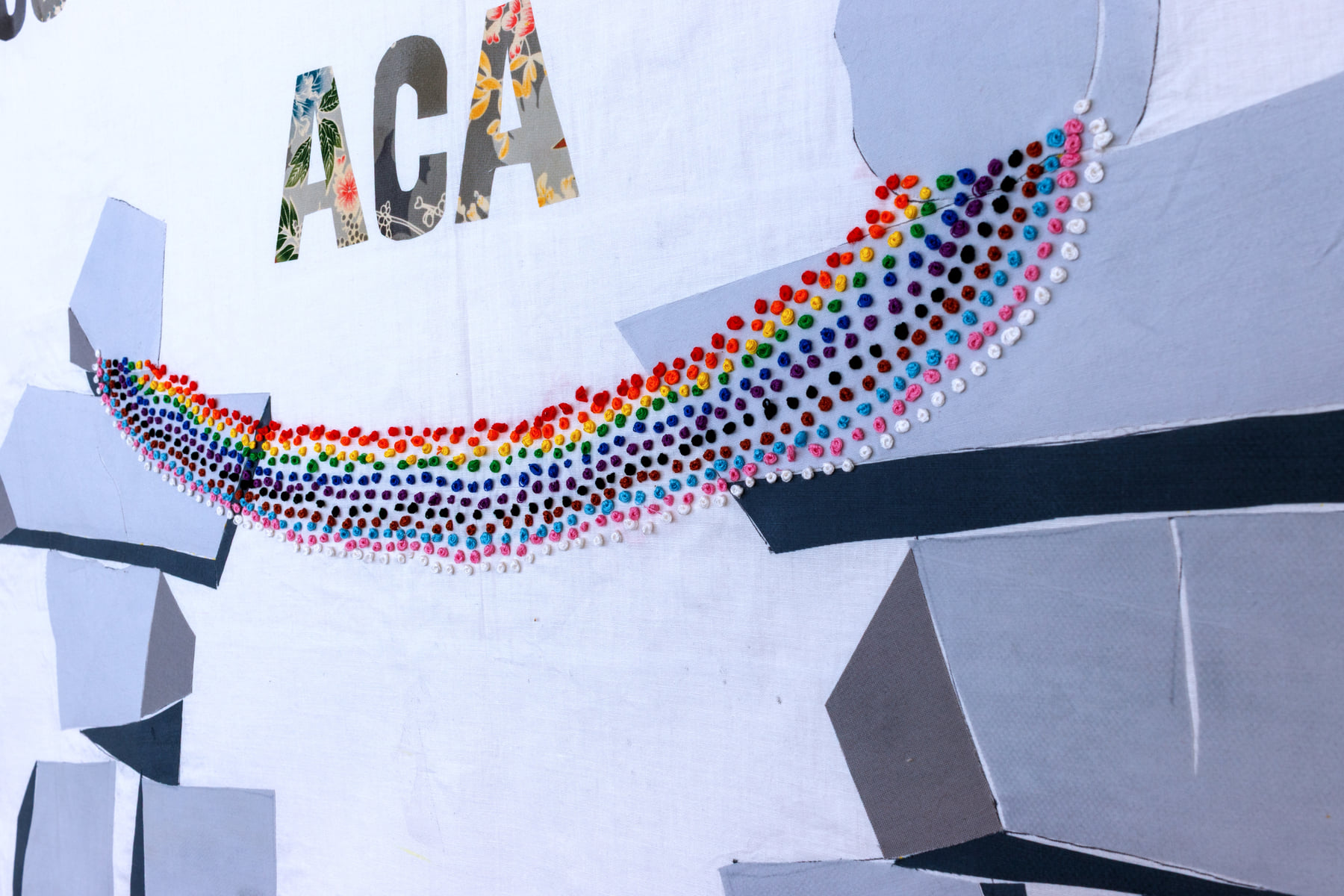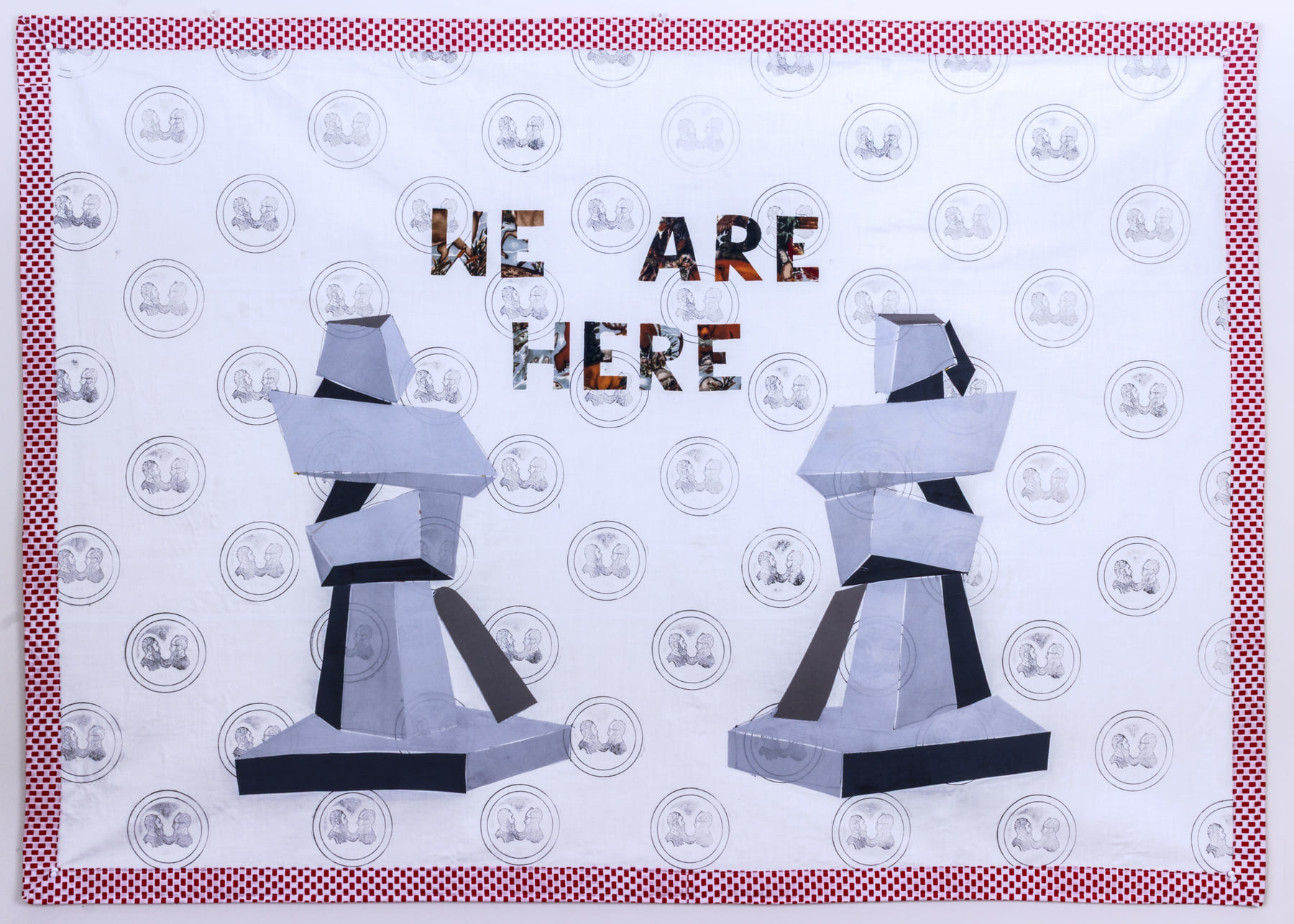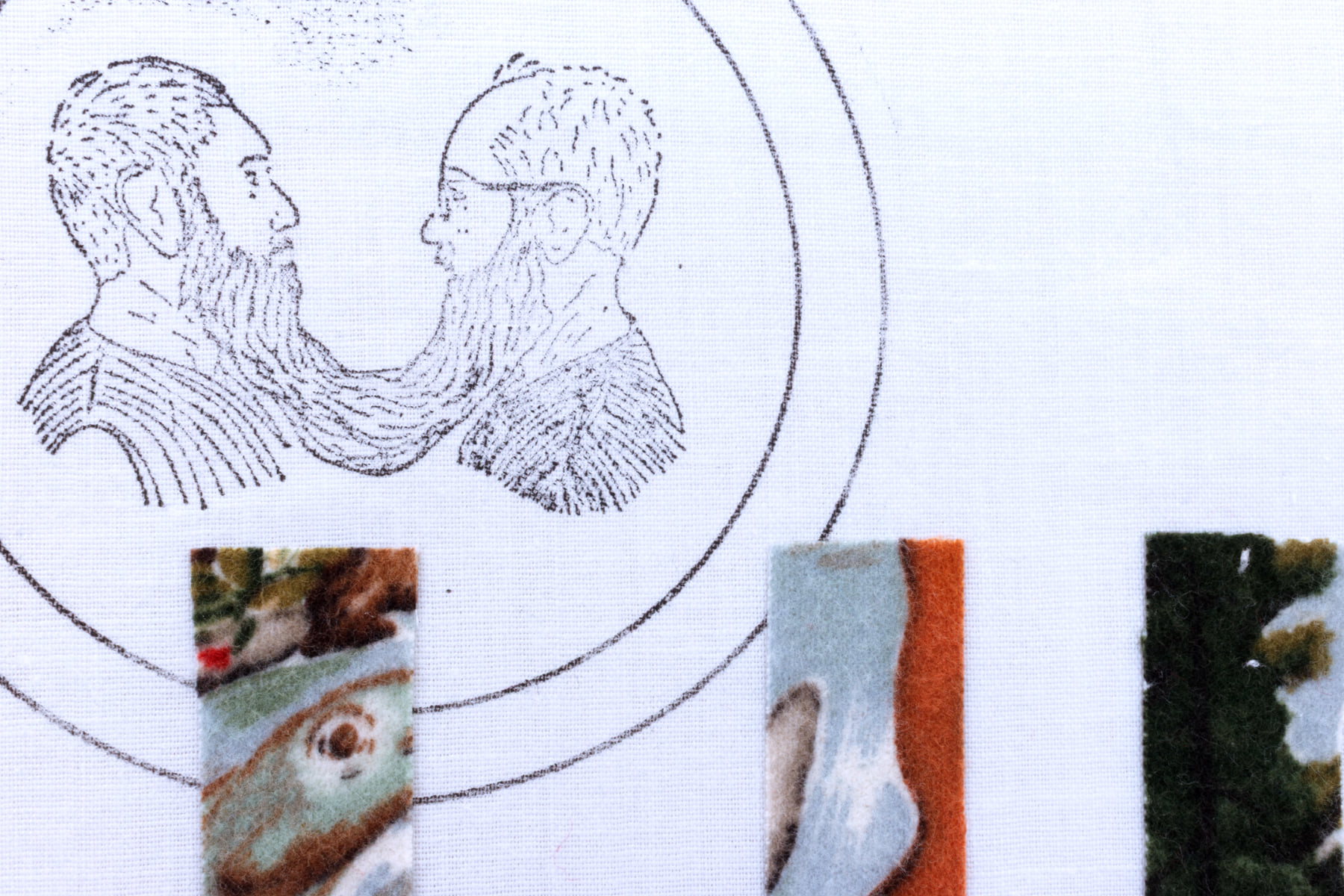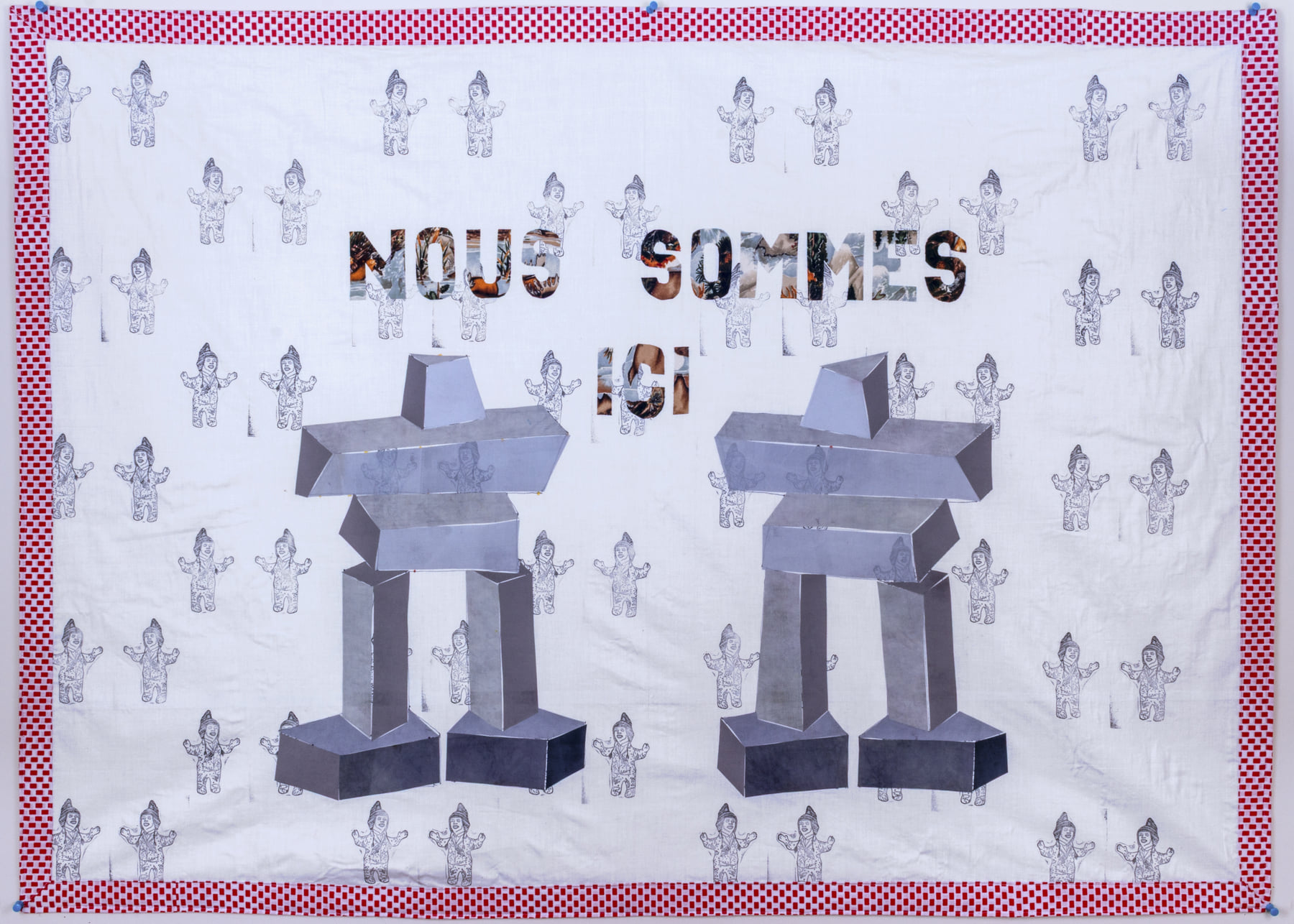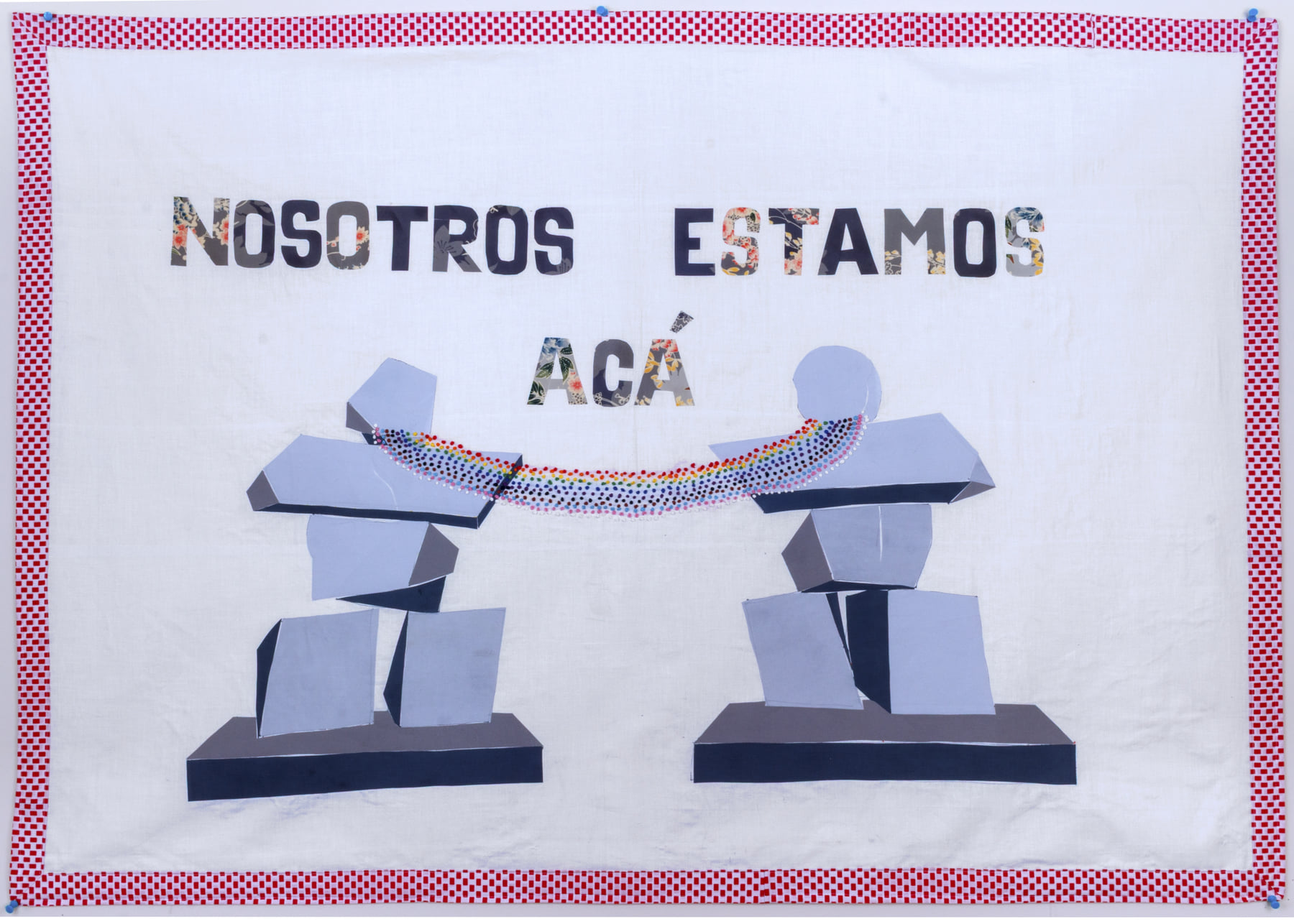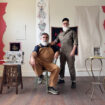WE ARE HERE
Chiachio & Giannone, Argentina
Description
View this artwork page in Spanish
“We are here”
Textile collage and stamp print on fabric
100 cm x 143.5 cm
“Nosotros estamos acá”
Textile collage, hand embroidery with cotton threads, and stamp print on fabric
100 cm x 143.5 cm
“Nous sommes ici”
Textile collage and stamp print on fabric
100 cm x 143.5 cm
In these pieces, we work with human representation through the stacking of stones. This practice is called “inukshuk,” which means “in the likeness of a human.” For generations, Inuit peoples have created these impressive stone markers across the vast Arctic landscape. Inukshuks serve various functions: guiding travelers, warning of danger, assisting hunters, and marking places of reverence.
Before arriving in Canada, we held certain stereotypes of Canadian imagery. The representation of the human figure through accumulated stones has become widely recognized as emblematic of Canada, though it originates specifically from Arctic regions. This was among the first images we encountered on promotional materials at Toronto airport. During our initial exploration of Vancouver, at the base of the ski runs on Cypress Mountain, we discovered two large-scale stone figures positioned beside Olympic Games symbols. We later observed smaller versions in residential gardens and witnessed young people by the river creating stone stacks, experimenting with balance.
Stone stacking carries spiritual, cultural, and navigational significance across many cultures. It can represent balance, wishes for good fortune, or serve as pathway markers. In feng shui practice, stacking stones harmonizes spatial energy.
As a creative partnership, we chose to represent ourselves through bodies formed by stone accumulation—a gesture of marking our presence in this city.
Upon arrival, we immediately claimed our temporary studio space and began producing work, transforming it into an active creative laboratory over our two-month residency.
“We are here” functions as our declaration of presence, making our artistic existence visible in this city. This work also responds to our role as the inaugural artists in this “International Artist Residency Program” (2025–26).
Note: Traditional inukshuk construction typically uses two base stones for legs, longer flat stones for the body and arms, and one or two stones at the top forming shoulders, neck, and head.
